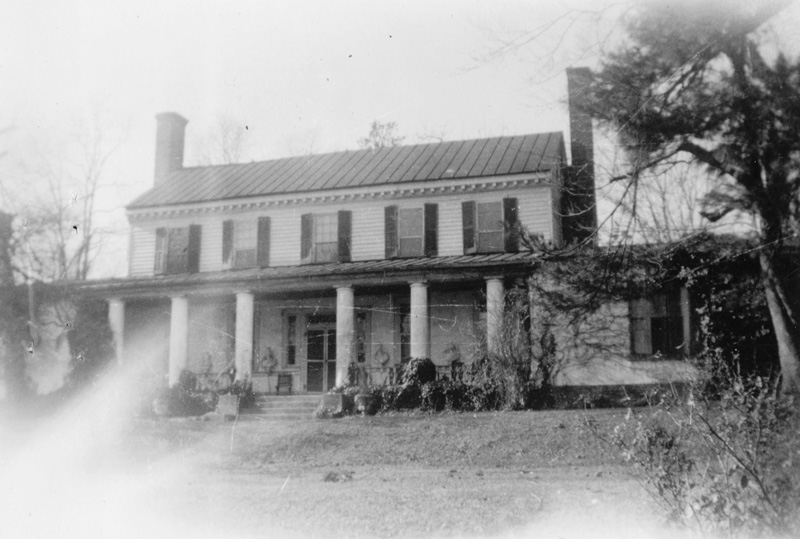
-
WORKS PROGRESS ADMINISTRATION OF VIRGINIA
HISTORICAL INVENTORY
54
COUNTY: Caroline
CLASS: Home
Photograph
---"GAYMONT".---
This write-up is a part of the Virginia W.P.A.
Historical Inventory Project sponsored by the
Virginia Conservation Commission under the
direction of its Division of History. Credit to both
the Commission and W.P.A. is requested for
publication, in whole or in part. Unless otherwise
stated, this information has not been checked for
accuracy by the sponsor.
Research made by
Selma Farmer
Port Royal, Virginia. November 2, 1936.
--------------------------------------------------------
CARD-54
1. SUBJECT:
"Gaymont"
2. LOCATION:
1/4 of a mile west of Route #17, 2 miles north of Port
Royal, Virginia, and 20 miles south of Fredericksburg,
Virginia.
3. DATE:
About 1670.
4. OWNERS:
This house has the distinction of being one of the first
houses to have been built in America. The tract of land
was granted to a Mr. Catlett family by John Hipkins. At
his death the estate was left to his grandson, John
Hipkins Bernard, who married the grand-daughter of Shake-
speare. Helen Straum, youngest child of John Hipkins
Bernard, inherited the estate and married Philip Light-
foot Robb, This was about 1865. Their descendants own
the estate at the present date, (1936.)
5. DESCRIPTION:
This old house of Gaymont lies on a hill overlooking the
Rappahannock River. It is constructed of stucco over
bricks. The upper story and the parlor are constructed of
frame, the weather boarding having bevelled edges.
The general plan of the house seems to have followed the
shape of an "L". It is one hundred feet long, spread out
with one room straight through. There are pentagonal
wings on each end of the house and an octagonal room on
the back. The octagonal room has always been known as the
music room. The dimensions are 18x22.
There is a one-story porch here enclosed by wings on each
end. It is supported by six very large stone columns.
Between the windows opening on the porch at either end
are plaster busts of Washington, Franklin, Shakespeare,
Milton, Scott, Byron, Napoleon and LaFayette.
The hall and the rooms on either side of it have hand
carved friezes. The breast of the chimneys have wood wains-
coting. The walls are plastered and there are chair rails
in all the rooms. The crescentic arch in the hall shows
details of Grecian inspiration. This room has moulded
cornice and scenic wall paper representing the Bay of Naples.
While the front of the front doors have panels and run
perpendicular the back of it runs diagonal, it was construct-
------------------------------------------------------------
CARD-54
-2-
ed thus to prevent Indian arrows from splitting it. All
the doors in the house have been painted.
One remarkable feature about this old house is that all
of the furniture has been left as it originally was. None
of the family has cared to take any of it away.
6. HISTORICAL SIGNIFICANCE:
Mr. Bernard brought over from England two English
gardeners who remodeled the grounds and gardens into their
present forms. At the back of the house are four gravel
walks. Mr. Bernard is said to have brought shiploads of
gravel from Bermuda for these walks, as well as conch
shells for the fountains.
There are many trees here on the immediate grounds and
hill-sides which were imported.
During the War Between the States a battery would have
been placed on the hill but at the earnest entreaties of
the ladies of the family the officers decided not to place
it there. Two of Mr. Bernard's daughters remained at
Gaymont during the entire War and General Abercrombie, the
Union Commander, showed them great courtesy and kindness.
When their horses were stolen they went to him and he had
them released and sent a special guard to Gaymont to pro-
tect it from further disturbance of the Northern Troops.
7. ART:
Photograph
8. SOURCES OF INFORMATION:
Informant: Miss Fannie B. Robb, Rappahannock Academy,
Virginia.
